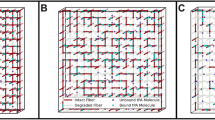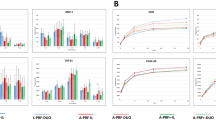Abstract
Permin and Astrup used a plate method of demonstrating fibrinolytic activity1,2. This technique can be applied histologically. A thin layer of fibrin is made on a microslide by adding a drop or two of fibrinogen to a film of thrombin on the glass. When the fibrin layer has formed, a section of fresh or alcohol-fixed tissue cut on the freezing microtome is applied to its surface and the preparation incubated at 37° C. After 30–60 min. patches of digestion of the fibrin appear in relation to structures possessing fibrinolytic activity. These patches appear as clear zones when the preparations are stained with hæmalum and eosin (Fig. 1), and can be related to the structures in the section.
This is a preview of subscription content, access via your institution
Access options
Subscribe to this journal
Receive 51 print issues and online access
$199.00 per year
only $3.90 per issue
Buy this article
- Purchase on Springer Link
- Instant access to full article PDF
Prices may be subject to local taxes which are calculated during checkout
Similar content being viewed by others
References
Permin, P. M., Nature, 160, 571 (1947).
Astrup, T., in “Blood Coagulation and Allied Problems”. Transactions of the First Conference of the Josiah Macy, Jr. Foundation, New York (1948).
Author information
Authors and Affiliations
Rights and permissions
About this article
Cite this article
TODD, A. Fibrinolysis Autographs. Nature 181, 495–496 (1958). https://doi.org/10.1038/181495b0
Issue Date:
DOI: https://doi.org/10.1038/181495b0
This article is cited by
-
Antifibrinolytic treatment in subarachnoid haemorrhage: Present state
Acta Neurochirurgica (1982)
-
Histotypic angiogenesis in vitro: Light microscopic, ultrastructural, and radioautographic studies
In Vitro (1982)
-
Studies on thromboplastic and fibrinolytic activities of valvular tissue in rheumatic valvular disease
Research in Experimental Medicine (1980)
-
Histochemical investigation of the distribution of plasminogen activator in experimental ischemia
Bulletin of Experimental Biology and Medicine (1976)
-
Plasminogenaktivator und andere trypsin�hnliche Proteasen im Geb�rmuttergewebe und ihre Teilnahme an den Gewebsblutungen
Archiv f�r Gyn�kologie (1975)
Comments
By submitting a comment you agree to abide by our Terms and Community Guidelines. If you find something abusive or that does not comply with our terms or guidelines please flag it as inappropriate.



